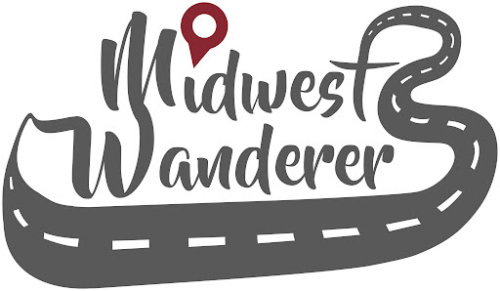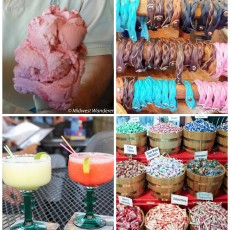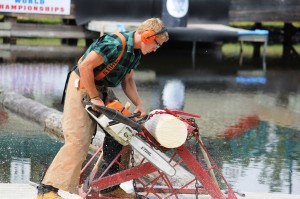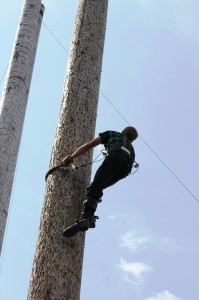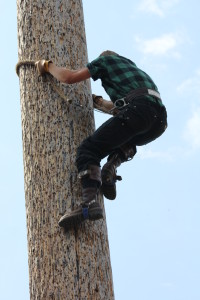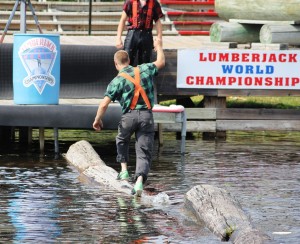Browsing downtown shopping areas has become one of my favorite things to do when visiting a resort town. Along with souvenir and t-shirt shops, I’ll often find unique gift shops, wine tasting rooms, specialty food stores and boutiques. Inevitably I pick up a treat or two. Hayward, a resort town in Wisconsin’s Northwoods, is one of those towns. We spent an entire afternoon shopping and sampling our way through Hayward on our trip there last summer. Read more
Hayward
Owl Prowl: Calling Owls in Wisconsin’s Wilderness
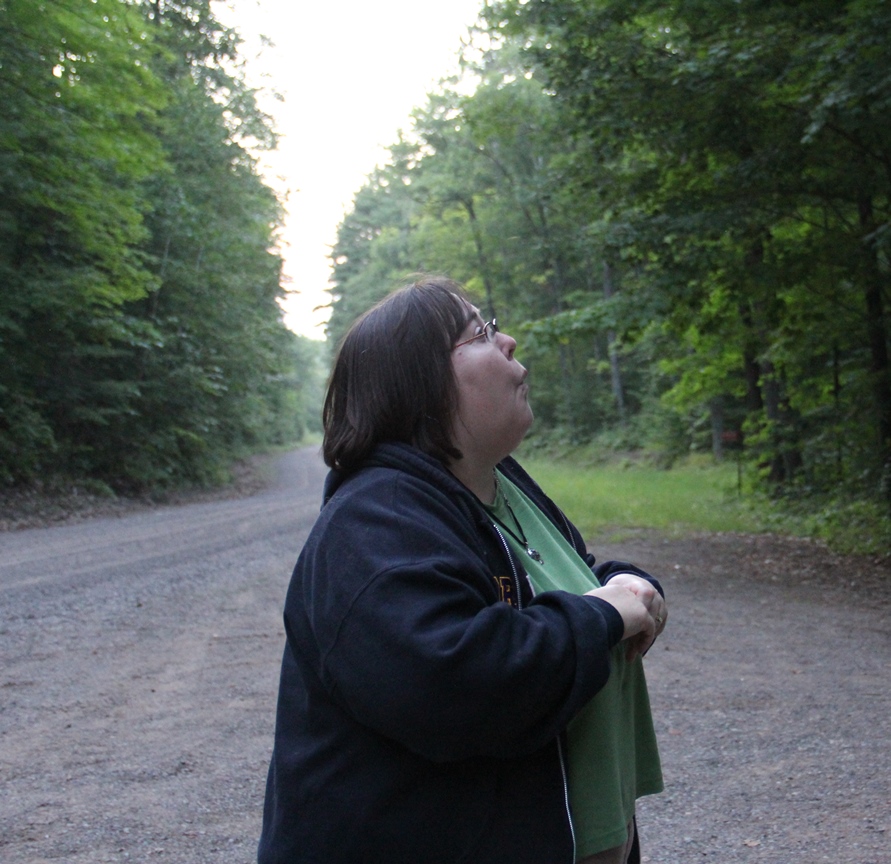
Our itinerary instructions said to meet at the North End Trailhead at 8 p.m. to call in barred owls. If it was October, there would have been an element of Halloween eeriness about it, driving down dark, silent North Wisconsin forested roads, meeting an owl caller who attracts birds of prey. My imagination could run wild with that. But it was July and still light as we made our way to the meeting place following maps and signs. The GPS wouldn’t do for this destination.
Don’t miss a Midwest Wanderer post. For a FREE subscription, enter your e-mail address in the Subscribe2 box to the left and click Subscribe.
Skip and I met Susan Thurn, a naturalist formerly with the nearby Cable Natural History Museum and expert barred owl caller, accompanied by Emily Stone, the museum’s current naturalist. A newlywed couple on their honeymoon were the other participants in the evening’s activity.
Before the calling began, Susan shared some interesting facts about barred owls:
- They can’t move their eyes in their eye sockets
- They have extra vertebrae in the neck and can turn their neck 270 degrees
- If they could read, they’d be able to read a newspaper from across a football field
- Human eyes would have to be the size of grapefruit to see as well
- Barred owls nest in tree cavities or in old nests of hawks or crows
- They breed once a year, in February or March
- Males weigh on average 1.5 pounds, and the females average 2 pounds.
- The weight is mostly feathers
- Wingspan is about 38 to 42 inches
Susan demonstrated how the soft, feathered edges of the owl’s wings dampen the sound made from flapping wings.
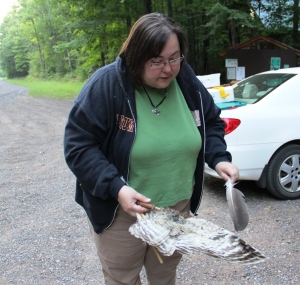 We also passed around an owl talon and an owl pellet. Owls eat small prey whole and then regurgitate non-digestible parts. The pellets are usually bones covered with fur.
We also passed around an owl talon and an owl pellet. Owls eat small prey whole and then regurgitate non-digestible parts. The pellets are usually bones covered with fur.
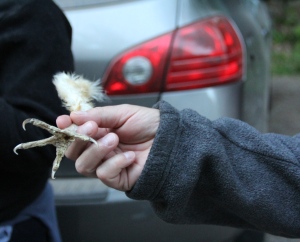 Although there are several kinds of owls that make the Wisconsin Northwoods their home, we would be calling only barred owls.
Although there are several kinds of owls that make the Wisconsin Northwoods their home, we would be calling only barred owls.
Susan has the sound of the barred owl down pat. She once used a machine that compared her call to the call of a barred owl, and it match almost perfectly. You can hear a barred owl sound (click to listen) on Learner.org’s online Owl Dictionary. It sounds kind of like “Who cooks for you? Who cooks for you all?”
We learned the sound together as a group and then stayed completely silent while Susan called an owl. She said they don’t always call back; it depends on how close by they are. When they do call back, they may actually come closer, to protect their territory, or move farther away, to leave another owl’s territory.
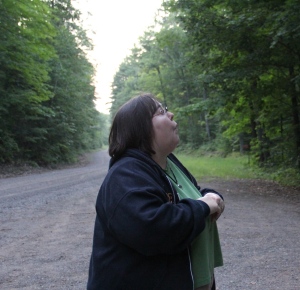 Silently we listened as Susan called, “Hoo hoo hoo hoooo, hoo hoo hoo hooo.” Silence, She called again. This time we heard an answer. “Hoo hoo hoo hoooo, hoo hoo hoo hoooo.” Susan called again, and we got another answer. This went on for a couple of minutes, each time the owl sounding farther away. Susan says she always lets the owl “win” by ending her calls before the owl does.
Silently we listened as Susan called, “Hoo hoo hoo hoooo, hoo hoo hoo hooo.” Silence, She called again. This time we heard an answer. “Hoo hoo hoo hoooo, hoo hoo hoo hoooo.” Susan called again, and we got another answer. This went on for a couple of minutes, each time the owl sounding farther away. Susan says she always lets the owl “win” by ending her calls before the owl does.
By the time we left, night was falling. Even though it was nowhere near autumn, a bit of Halloween eeriness was in the air in the dark forest that was once again completely silent.
Owl Prowls, held about four times each year, are one of many events sponsored by the Cable Natural History Museum, Cable, Wisconsin. Donations are welcome from event attendees.
Disclosure: Our trip to northern Wisconsin was hosted by the Wisconsin Department of Tourism, but any opinions expressed in this post are my own.
Thank you for reading Midwest Wanderer. Don’t miss a post. Enter your e-mail address below and click Subscribe to be notified whenever I publish another post. Subscription is FREE. After subscribing, be sure to click the link when you get the e-mail asking you to confirm. – Connie
Fred Scheer’s Lumberjack Show, Hayward WI: Skill, Competition, Laughter
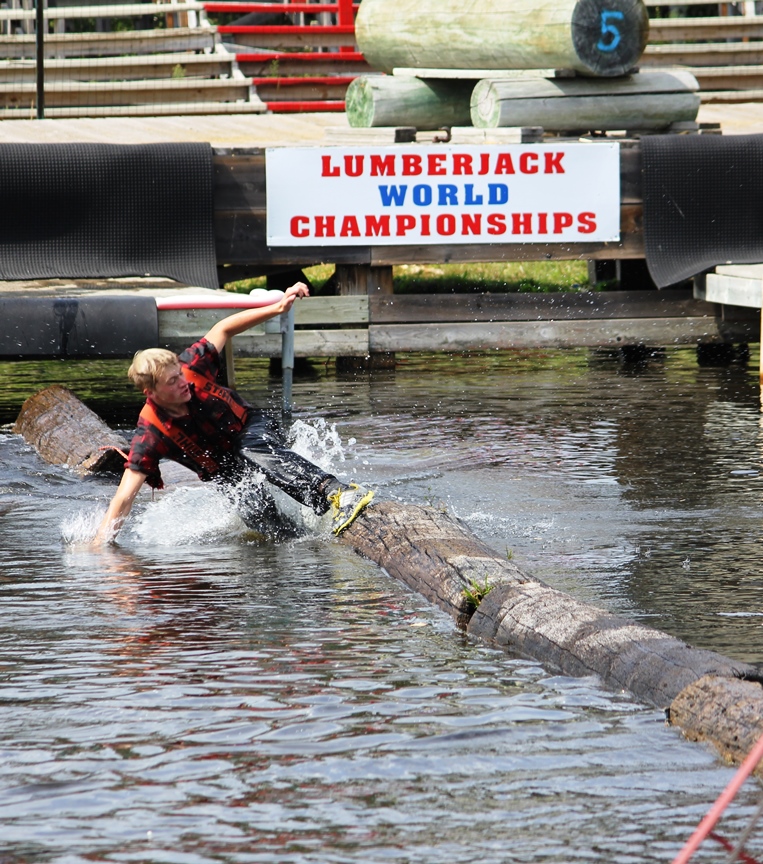
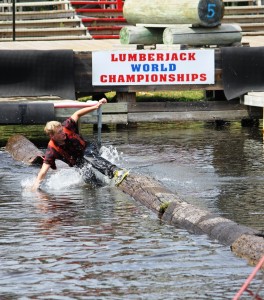 Two teams of two lumberjacks compete in ten events, sawing through logs with a two-man bucking saw, racing up and down a 90-foot pole and running across logs in the water. More often than not they don’t make it across before tumbling into the water with a big splash. The crowd boos the opposing team and cheers for their team with a loud Yo-Ho! At a Fred Sheer’s Lumberjack Show you’ll learn a little about logging life, witness the skill that it took to be a lumberjack, and have a whole lot of fun.
Two teams of two lumberjacks compete in ten events, sawing through logs with a two-man bucking saw, racing up and down a 90-foot pole and running across logs in the water. More often than not they don’t make it across before tumbling into the water with a big splash. The crowd boos the opposing team and cheers for their team with a loud Yo-Ho! At a Fred Sheer’s Lumberjack Show you’ll learn a little about logging life, witness the skill that it took to be a lumberjack, and have a whole lot of fun.
The 1800s lumberjack spent months in northern Michigan, Minnesota or Wisconsin felling trees, hauling them by wagon or sleigh to the river and floating them downstream. Logging was hard work that took skill, teamwork and the use of manual tools, either one-man or two-man bucking saws or cross-cut saws and axes. At times lumberjacks had to climb high in the trees, and once they were felled, the heavy logs would have to be cut into sections and lifted onto a wagon or sleigh with the help of a rope.
Don’t miss a Midwest Wanderer post. For a FREE subscription, enter your e-mail address in the Subscribe2 box to the left and click Subscribe.
At the end of a season, lumberjacks left their camp and headed to the nearest small town. There could be 10 to 12 logging teams going to the same town, and one of the first places they visited was the local watering hole. The lumberjacks would greet each other with a Yo-ho, and conversation would eventually turn to banter about who was the better skilled team. They would challenge each other to competitions to prove the better lumberjacks.
The Fred Sheer’s Lumberjack Show emulates those challenges with skilled lumberjacks but adds comedy, making for an entertaining hour. Held at the same arena as the annual Lumberjack World Championships® in what used to be a holding site for Weyerhaeuser’s North Wisconsin Lumber Company, the audience is divided into two sides, one half cheering for one team and the other half cheering for the opposing team. The competition includes events such as a cross-cut saw contest, an axe throwing contest and relay races.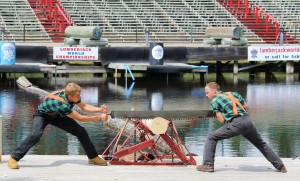
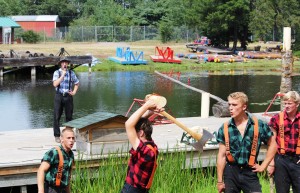
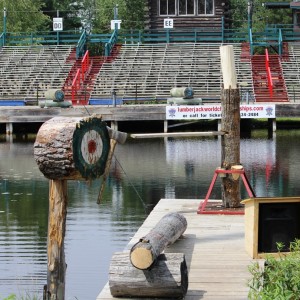 Some try to cheat by using a chain saw.
Some try to cheat by using a chain saw.
One contestant demonstrates his speed carving talent.
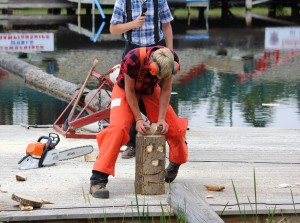 Okay, so it doesn’t look like he’s such a great carver, but when finished and turned over, the not-so-great carving turned into a cute little stool that was given away to a child in the audience.
Okay, so it doesn’t look like he’s such a great carver, but when finished and turned over, the not-so-great carving turned into a cute little stool that was given away to a child in the audience.
You’ll be amazed at the way the lumberjacks can climb 90 feet up a pole and back down again within seconds.
Log rolling and the log boom run are great fun to watch. Most contestants fall in the water at some point. However, lumberjack Charlie, two-time world champion, made it across the log boom several times without falling once.
The final, hilarious act of the show is canoe jousting, where opponents fight until one knocks the other into the water.
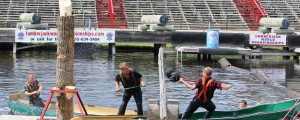 With logging such a big part of 19th century Wisconsin Northwoods, a lumberjack show makes fitting and entertaining addition to your trip, particularly a lumberjack show held in the arena used for the annual Lumberjack World Championships.
With logging such a big part of 19th century Wisconsin Northwoods, a lumberjack show makes fitting and entertaining addition to your trip, particularly a lumberjack show held in the arena used for the annual Lumberjack World Championships.
Fred Sheer’s Lumberjack Shows, located at Lumberjack Village one mile east of Hayward, Wisconsin, on Highway B, run June through August. Lumberjack Village also includes the River Deck Restaurant, a mini golf course, an ice cream shop, a boutique, and log cabin rentals. Check the web site for details, including exact schedule and ticket prices.
Disclosure: My visit to Fred Sheer’s Lumberjack Show was hosted by Fred Sheer’s Lumberjack Show and the Wisconsin Department of Tourism, but any opinions expressed in this post are my own.
Thank you for reading Midwest Wanderer. Don’t miss a post. Enter your e-mail address below and click Subscribe to be notified whenever I publish another post. Subscription is FREE. After subscribing, be sure to click the link when you get the e-mail asking you to confirm. – Connie
